Bigfoot Conferences – After Hours
Posted by: Rick Noll on October 23rd, 2005
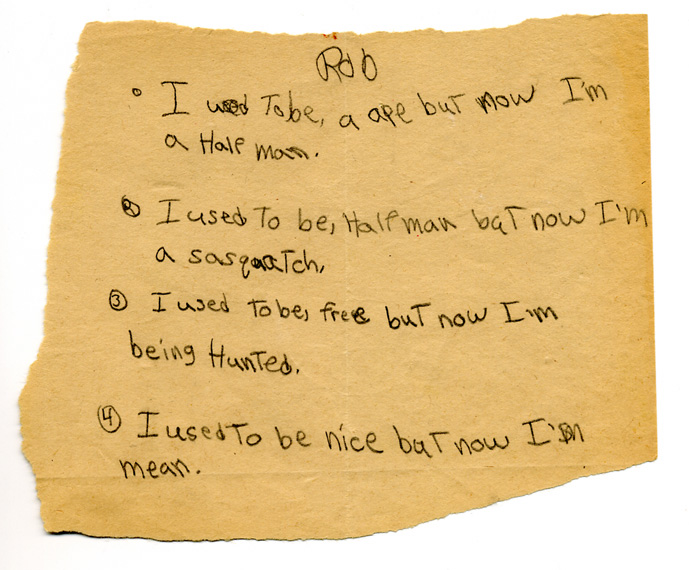
(System of a Down – Radio/Video)
In Oct of 1974, screams in the night and early morning were starting up around the Puyallup/Orting area of centeral Washington state. Basically this was the foothills of Mt Rainer. A grade school teacher became concerned for her class and called the college I was attending because she had heard that there was a Sasquatch research group there. She wanted to alliviate any fears her class may have been feeling about Bigfoot in the area so asked me to give a short talk on the subject.
I stood behind her podium talking for about thirty minutes on the subject, showing slides in the dark when I came out from behind it to demonstrate how I look for tracks of the creature. I asked for the room lights to be turned on as I walked between the isles, on my own feet were attached large plywood cutouts of Bigfoot like feet.
Less than two weeks later I recieved a letter from this teacher with about 20 poems written by her students.
…
There are many characters involved with Bigfoot research, some I really don’t care to remember, but once in a while an individual will come along and frankly side swipe you with their charm, inquisitiveness and intelligence. This happened to me last year after giving a small informal talk on the Skookum cast at the Seattle Mystery Museum.

(Moby – Alone)
A young man and his lovely companion, Matt Crowley and Dana, approached me with some very interesting observations after the short talk. It wasn’t but a few months later that the operators of this museum called me and said that Matt had produced some interesting artifacts that I should come down and see. Well, always the curious one, boy was I glad I did.
Many times I leave little clues as to where I think current research should travel towards, not really wanting to influence the process or outcome. Just see what others will come up with and Matt here came up with some wonderful observations.
I won’t go into all the details of his work or results but will touch upon some things that go back to earlier blogs here.
Matt decided to test out the ability of plaster to actually capture small details claimed to be found in some Sasquatch tracks – dermal ridges, healed cuts and wounds, you know – skin. He fascinated me and I asked if I could try and document what he was doing… on video. He agreed and the process began. Right now I plan on augmenting Matt’s talk, given at the TBRC 2005 Con with the background footage I have been shooting for the conference video being produced.
A Hydrocal B-11 cast of Matt Crowley’s own foot exhibiting pouring artifacts. His own dermal ridges are underlining throughout.
Many will wonder about this. Shouldn’t it be some one from Skeptical Enquirer doing this instead of a Bigfoot Hunter? Why help in the possible demise of the latest scientific findings making the news? I guess that is just who I am. All news on the subject, whether supporting or not should be analyzed and I hope that most of you feel the same way. I have always preached that it best to police our own.
This is not to say that dermal ridges have not been found in Sasquatch tracks or casts made from them… only that true scientific inquiry demands rigorous testing and thinking outside of current paradigms. We are talking about an undiscovered, giant hairy ape, living amongst us here afterall.
…
In August of 1967, John Green cast an old track he found on a dirt road running between Blue Creek and Onion Mountain. It soon became labeled the Blue Creek Mt cast. He wrote of it in some of his earlier publications.
Here was a cast that had many ridges running in circular formations all over it, showing all the signs of friction ridges found on all primate feet and hands. John made a statement once about seeing these lines in an actual track but later corrected this by saying that one night while there (northern California) he was called over to a track by some of his companions and by flashlight saw ridges in its sole. He thought – Oh No! Someone is faking these tracks with wooden feet. The misconception about all of this was the name given the track and cast – Blue Creek Mt. – when years later he realized that the shadows in pictures placed these tracks closer to Onion Mt, so the name was changed. Didn’t make front-page news but did confuse people who were studying it. The ridges he witnessed that night was also assumed to have been in the bottom of the track producing this cast. It was not.
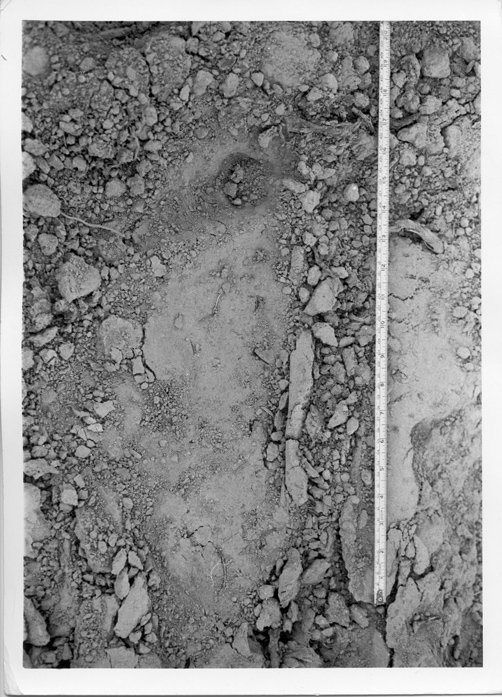
….
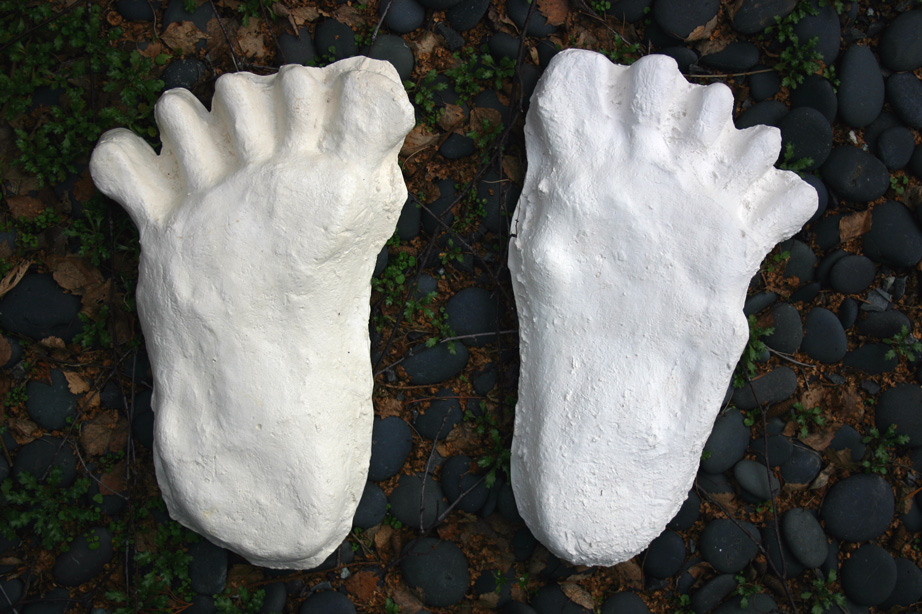
Paul Freeman’s “Wrinkle Foot” casts.
In 1984, Paul Freeman cast a set of both right and left tracks in the Blue Mountains of Washington/Oregon states. Not the same place as Blue Creek Mountain of California. Another bit of confussion? These casts became known as “Wrinkle foot”. Not very well documented in the literature. Grover Krantz almost off-handedly mentions them in his “Bigfoot-Prints: A scientific inquiry into the reality of Sasquatch”.
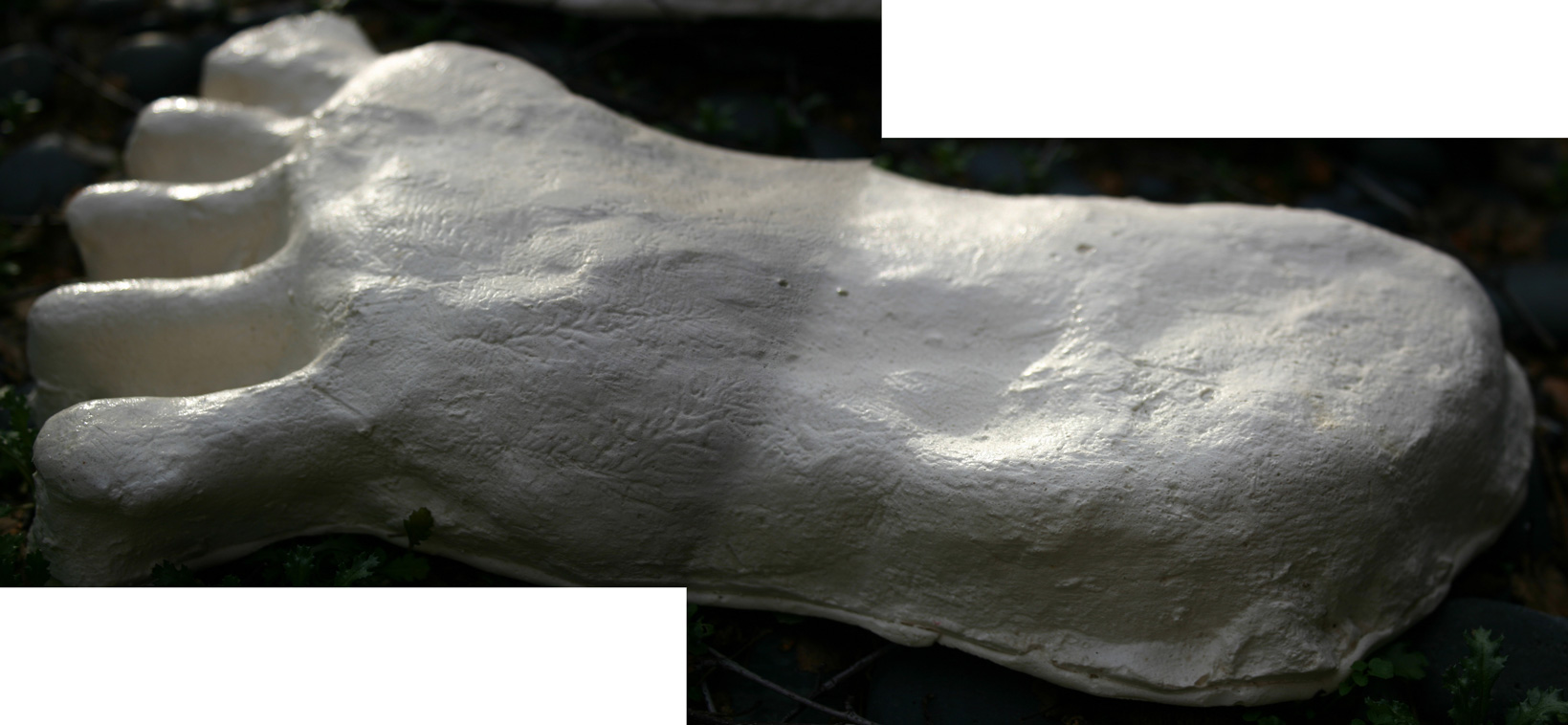
Close-up of “Wrinkle Foot’s” left cast showing what some have thought to be scar healing patterns.
Over the years, Paul developed a shady reputation concerning the subject, some saying even resorting to hoaxing evidence, so not much attention was given to this man or his evidence, except by the local media.
Grover attempted to duplicate the ridge patterns he found on these casts with combs and other items. Later, even others explored this approach with the serrated edge of butter knives. The results were all less then successful. They lacked details such as what appeared to be sweat pores, symmetrically placed along the tops of the ridges. The over all dimensions were also grossly enlarged caricatures of what now Grover felt might be definitive proof for these animals existence.
…
(Milton Mapes – Craters of the Moon)
After conference meetings can be quite fun and enlightening. At this one Jimmy Chilcutt, Dr. Jeff Meldrum, Matt Crowley, Bob Strain, Scott Heriott and I met on the veranda of the cottage some of us were staying in at Ennis. The talk centered on just what was the proper name for the John Green cast and what other types of artifacts had Matt produced. Matt brought with him small examples of the artifacts he had produced but certainly not a complete representation. Matt graciously gave me four casts representing all artifacts he had thus far discovered during our video work. One cast he has yet to duplicate again.
We settled on the name Onion Mountain and discussed all the ridge details that certain methods of pouring plaster and their substrate could produce. Left out was an example that I am attempting to describe here… that of Wrinkle foot, in pictures. Remember… context! and of course this is just me talking.
Some have commented that these wrinkles are exactly how skin repairs itself after injury. What Matt has found offers a different explanation though. This is not to dissuade the thought of there actually being dermal ridges and skin injuries found on casts and in tracks but it is knowledge we could all use.
Not to steal Matt’s thunder, I won’t go into anymore detail than this or to say that the substrate, air temperature, thickness of the plaster and temperature of the mixing water seems to play important roles. I highly recommend that the curious watch his, Jimmy’s and Jeff Meldrum’s presentation when it becomes available.
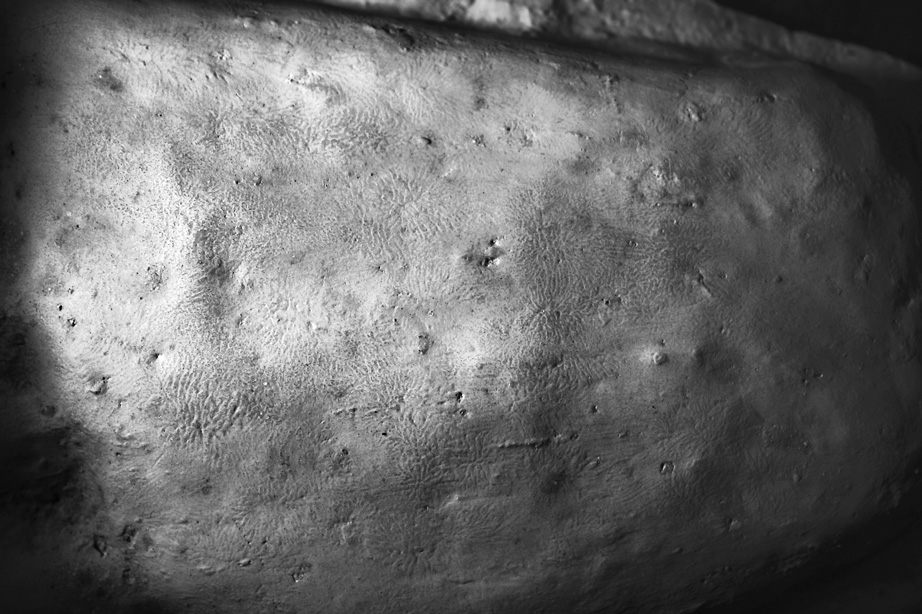
One thing we can all agree on, man is by far the better tool user and designer of this planet. Consider this just yet another tool in the search for Bigfoot.

And watch out for areas like this glacial till along stream beds that can lend casting artifacts to tracks you might find in them.
About Rick Noll
Rick Noll has been actively searching for the Sasquatch since 1969 and continues his pursuit with extended field trips into the Pacific Northwest's most remote regions. Rick has worked with Peter Byrne, René Dahinden, Grover Krantz, John Green, Jeff Meldrum and the BFRO during all this. He helped with many documentaries on the subject including Animal X: The Skookum Expedition and Sasquatch: Legend Meets Science.

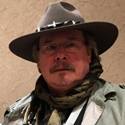








I had never heard about possible scar patterns on the cripple foot – is that still being considered? I am very interested in what Mr. Crowley and Mr. Chilcutt decide on this whole question – it affects so much. And, I agree, researchers in this area must police themselves, less the skeptics do it 🙁 thats not such a good thing.
Thank you 🙂
Small correction… this is Wrinkle foot. Cripple foot (seen four times in four different places) never reached the Blues. First discovered up in the Spokane area of Washington state (first seen in 1969). It was cast a couple of times, once in snow and once in mud.
The artifacts Matt can produced has to be fully understood before corrective measures in field methods of casting tracks get devised. I am sure they can been developed but it will make it even more important for people to do it right, unless they like destroying evidence by introducing such things.
In the past, who would of thought that casting tracks had so much science in it?
Thank you for your comments… lets me know that someone out there is reading the content. I know that sometimes my wording is a little hard to follow, least that’s what I been told.
I wonder, does plaster, fixall, hydrocal, act differently from each other when making cast? What material does Matt use or does he work with all? Maybe a liquid base could remedy the issue.
Opps 🙂 Fingers got the best of me again – lol.
Are you saying this could be the same animal? When was the last found wrinkle foot track? What year? How often do you come across tracks that appear they could belong to the same animal such as this?
I cannot speak for anyone else – but I think your stories are fascinating, and I enjoy the way you tell them. Giving a little information, then a cliffhanger — LMAO… good writing 🙂
Hi Melissa, the wrinkle foot cast was made here in the blue mountains of walla walla wa by Paul Freeman, the wrinkle foot cast or should i say the eoot that made the cast has never been seen anywhere ealse or again in this area. It’s the only cast from here that has the smothness and look that it does. There is also a cast from here that gets confused with the crippled foot cast from Bosburg, it’s my belief that it was made to do just that. Brian
Hi all. A bit of clarification please. Where there more prints from the wrinkle foot print? That is to say, if the wrinkle foot were the right foot, were there multiple right foot prints? If so, were casts made of these prints also? If so, were the features of the wrinkle foot print evident in the sequential prints. This would eliminate the features from being just a one time anomaly connected to maybe pouring technique or characteristics of the medium used to make the casting. Just a thought.
Rick may know more than i do but as far as i know the wrinkle foot cast is the only one, I don not believe any other cast were made where that track was found, from what i have heard it was a lone track. I dont even think there is a photo of the imprint before being cast.
Mausinn… According to Grover Krantz there were three casts made… a left and right and a partial front half of another right one. The passage he wrote of them in both of his books indicate that all of the casts had this wrinkle texture.
Apparently they found on a slope.
Different plaster compounds do act differently to substrate, temperature, thickness and humidity while being used.
About 4 years ago, in our study area, Owen and I came across a dozen or more tracks on a sand bar. We cast about 8 of them. Not the best I have ever seen… anyway, this last August another track was discovered close to our expedition camp, less then 8 miles from where we found the tracks 4 years ago. I casted it as well and a direct comparison of it to the earlier one indicates it might be the same individual… only about 5″ longer.